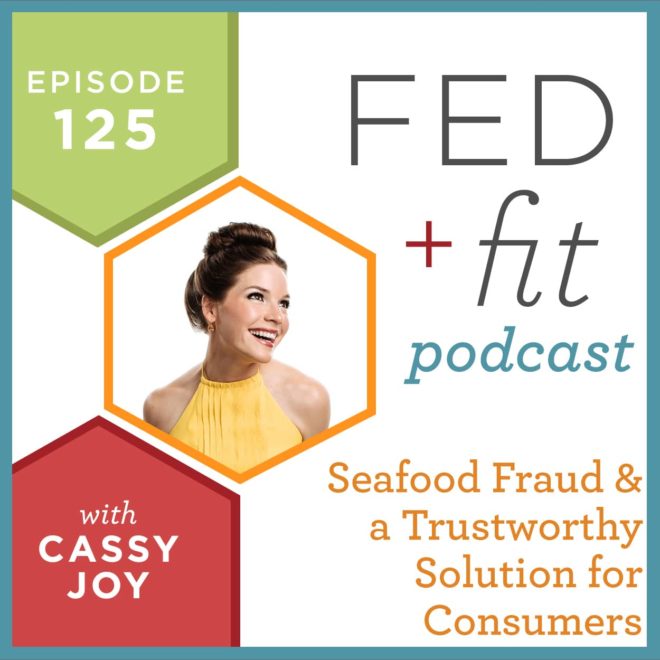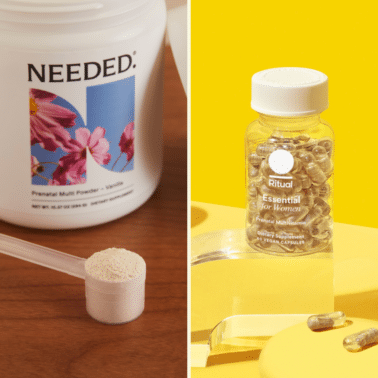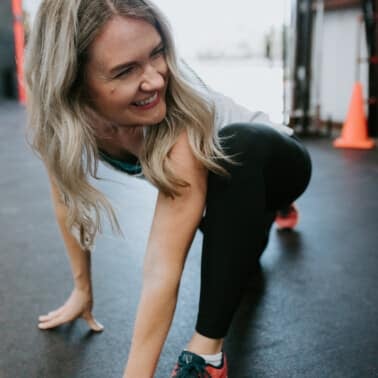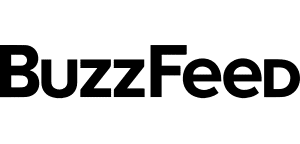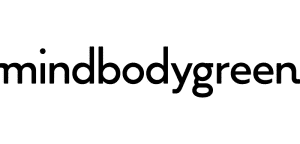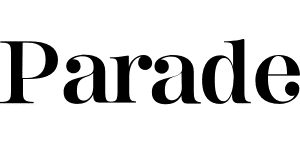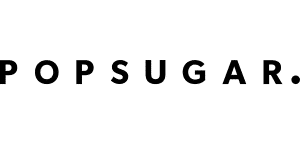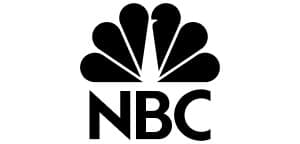On today’s episode, I’m chatting with Matt Luck, owner and CEO of Pride of Bristol Bay, about Seafood Fraud and a trustworthy solution for consumers.
We’re back with our 125th episode of the Fed+Fit Podcast! Remember to check back every Monday for a new episode and be sure to subscribe on iTunes!
Find us HERE on iTunes and be sure to “subscribe.”
[powerpress]
Episode 125 Sponsors
- Pride of Bristol Bay – be sure to enter the promo code “fedandfit” (one word, all lowercase) at checkout for a discount.
Episode 125 Links
- https://www.localfoodalliance.org/projects/matt-luck/
- https://planetjh.com/2016/08/23/the-foodie-files-the-wisest-catch/
- https://www.burlingtonfreepress.com/story/money/2016/06/16/alaskan-fishing-business-social-mission-vermont/85612836/
- https://bangordailynews.com/2016/05/10/homestead/community-supported-fish-delivered-to-your-door-from-the-fisherman/
- https://www.tu.org/blog-posts/pride-of-bristol-bay%E2%80%94healthy-food-fuels-a-healthy-fishery
- http://prideofbristolbay.com/selling-salmon-save-salmon-fall-trout-unlimited/
Episode 125 Transcription
Today’s show is brought to you by Pride of Bristol Bay, where you can get truly sustainable, high quality, nutritious Alaskan sockeye salmon delivered right to your door. Pride of Bristol Bay’s wild salmon is sustainably harvested in the pristine waters of Bristol Bay, Alaska. Their focused team of fisherman are committed to the highest quality in handling standards at the point of harvest, creating the unsurpassed quality and flavor you’ll find in every one of their wild sockeye filets and portions.
Each case of their wild salmon is labeled with the name of the Bristol Bay fishing district in which the salmon was harvested. It’s the ultimate in traceability. Boxes of supremely fresh frozen filets and portions of the highest quality salmon are delivered to your door, skin on, and already deboned. It is hands down the best salmon I’ve ever enjoyed.
You can learn more about Pride of Bristol Bay and support their important work by ordering your first box of frozen salmon by visiting their website over at PrideOfBristolBay.com. And, for the month of October, make sure you submit the discount code, “fedandfit”, one word all lowercase at checkout.
Cassy Joy: Welcome back to another episode of the Fed and Fit podcast. I am your host, Cassy Joy Garcia. I am honored, proud, humbled; all of those good things today to bring you this very special guest for today’s guest interview.
I’m introducing you guys to a company that I’ve been chatting with for a while now, and I cannot wait to tell you about what they’re up to, how you can play a role, and the solution that they’re providing us. It’s big. It’s really exciting.
So today we’re chatting with Matt Luck, who is the owner and CEO of Pride of Bristol Bay. Matt, welcome to the show!
Matt Luck: Thanks for having me Cassy.
Cassy Joy: Oh my goodness. I’m so excited! I was gushing before we even pressed record. I’m really excited about what you guys are up to. Because I know you will put it more succinctly. Do you mind telling folks. And just to set the stage; Pride of Bristol Bay is our brand new Fed and Fit podcast sponsor. So you’ll be hearing a little bit more about them, in addition to an extended recipe partnership that we’re working on together. I very, very carefully select podcast sponsors. And I can’t tell you how excited I am to be working with these guys, and to bring their amazing product really just to the forefront, and tell you all about it. So tell us about Pride of Bristol Bay, a little bit about yourself, and how you got into the business of wild salmon delivery?
Matt Luck: You know, I’ve been involved with salmon fisheries in the state of Alaska on many levels since the late 70s. I’ve been a persaner, which is a particular way we harvest fish in southeast Alaska, Kodiak, Alaska, Prince William Sound, where we lived for 20 years. And in Bristol Bay.
Now, as I’m sort of towards the golden years of my career, we’ve sold off a number of our boats. The one constant in my entire career was returning to and fishing in Bristol Bay. Our industry, the commercial salmon fishing industry, sometimes the supply chain; from the fishermen, through the processor, through the distributor, to the consumer, ends up being a pretty dry, simple, vanilla commodity system. And at the end, the consumer, doesn’t really have a chance, one, to understand where their fish comes from. And two, to create any kind of connection between the people who harvest the fish, the place where they harvest it. And the product itself.
You might refer to that as regional branding. You might refer to that as developing a brand that a consumer can identify with. And Bristol Bay is a really special place. It has been for a long time. Like I said, it’s the largest wild sustainable sockeye salmon resource in the world.
I’ve served on a number of trade associations in the Bristol Bay area. Trade associations that represent the seafood industry in Alaska. And I’ve always been an advocate for trying to create an understanding of the regions, create a connection between the consumer, and the harvester, and the place. And the message associated with Bristol Bay is so genuine, and so unique, that I just felt that that’s where I would like to spend the last years of my career, and also do what I can to create awareness about that resource and make this beautiful product available to consumers.
Cassy Joy: That’s wonderful. And you know, in a lot of ways, it almost feels like an answered prayer. Because I have received so many questions and inquiries from readers and listeners wanting to know what is the best seafood choice. And it seems to be such muddied waters out there, right? Because consumers are more informed now, and we’re asking better questions. And we want to know, like you said. We want to know where our food is coming from. And I really think this is the right product at the right time, when people really, really want it.
Can you tell us; I had never heard about this term until you and I had started talking. But can you tell us a little bit about seafood fraud, and what that really means?
Matt Luck: Sure Cassy. So in the seafood supply chain, for a consumer, whether you walk into a Costco, whether you walk into a retail outlet, a grocery store, whether you walk into a sushi bar. It’s a maze that’s really difficult to navigate. You’ll ask a waiter, “Where did the fish come from?” You’ll ask a fishmonger behind a seafood counter, “Where did the fish come from?” You’ll ask a chef at a sushi restaurant, “Is this wild salmon or is it farmed salmon? Is it fresh, is it frozen?” And most of the time, you’ll be looking at somebody helping you that sometimes looks like a deer in the headlights. What comes out of their mouth, the answers they give you, there’s no guarantee that what you’re getting is a straight answer.
There’s an NGO called Oceana. And they did a review and a study of 1215 seafood samples around the country from retailer outlets; grocery stores; sushi bars, restaurants. And of those 1215 samples, through genetic testing, 33% were mislabeled. In some places like southern California, as many as 52% were mislabeled.
Cassy Joy: Unbelievable.
Matt Luck: In New York, 39%. In south Florida 38%. And one of the largest culprits of seafood fraud was farmed salmon being substituted for wild salmon. Most often, salmon being sold as wild king or sockeye salmon and being substituted with farmed Atlantic salmon.
So it’s a huge issue in the seafood industry. And really important that consumers have the opportunity to know where they’re sourcing their fish. To know where it comes from. And even take it one step further, and know who harvests it. Actually knowing your fisherman.
Cassy Joy: Mm-hmm. That really feels like the complete circle. And really what we’re looking for; so the way to really better vote with our dollars. If we want to support those true chains. The non-fraud ridden supply chains of quality wild salmon, for example, is to work with a company like Pride of Bristol Bay. As far as I’m concerned, that’s the way to do it. In addition to asking some of these strategic questions, do you have any other tips for consumers as they’re out there navigating the world of seafood?
Matt Luck: Well, asking the questions. Knowing the questions to ask. Looking at the gentleman behind the seafood counter and asking him where it came from. Could you take a minute and ask your supervisor if this is wild salmon or farmed salmon? Is this snapper that’s being sold, can you tell me where it came from? Do you know if it’s fresh or if it’s frozen? And doing a little research on your own.
The Oceana report is wonderful. And with all the resources we have at our fingertips today with the internet, doing a little research on your own before you harvest your fish. Or before your purchase your fish to feed your family can go a long way in making sure you know what you eat.
Cassy Joy: Absolutely. And just so the listeners know, I’m going to link to that report that Matt is talking about in the show notes. In addition to a bunch of other literature. Matt has been heavily involved in producing some white papers and some really interesting stuff out there, so I’ll link to it all.
Well, another question for you. Bristol Bay in particular; you said they were the five rivers. It’s one of the largest, or the largest, sustainable source for wild salmon. What about Bristol Bay in general makes it really unique? The salmon there is unique. I’ve been able to try Bristol Bay salmon, and I can personally vouch to the quality. It’s absolutely incredible. What makes the actual place so special and the salmon that’s sourced there?
Matt Luck: Well the one thing Bristol Bay has going for it is it’s so remote. If you look at a map of Alaska, and you see the Alaska Peninsula going out from the mainland to the southwest. North of the Alaska Peninsula is the Bering Sea. And Bristol Bay is north of the Alaska Peninsula, and it’s actually part of the Bering Sea. No road access. No dams. Very little, if any, industrial development. And just a pristine wild ocean and freshwater environment.
The cold-water fisheries habitat in Bristol Bay, like I said, is unprecedented. It’s probably one of the largest, most robust cold-water fishery habitats in the world. In the last 50 years, the average return of wild sockeye salmon to Bristol Bay has been about 30 million fish. The last few years, where some of the wild salmon populations in the Gulf of Alaska, south of the Alaska Peninsula and now through southeast Alaska, have performed in the range of 10 to 20% below the forecast, Bristol Bay has wild salmon returns in the magnitude of 20-30% above the forecast. So in today’s world, it’s a poster child for sustainability. Sort of the cornerstone of Alaska’s wild salmon fisheries with very, very strong returns and a very robust cold-water fisheries habitat.
Cassy Joy: Wow. That’s fascinating. Matt, you’re inspiring me to go defrost some salmon for dinner tonight. {laughs} I want some of that.
Matt Luck: I already have.
Cassy Joy: {laughing} Good for you. We’ve had some the last couple of nights, and I’m ready for more. That’s so wonderful. Can you walk us through. You’ve spent so much time fishing and learning so much about this process. Can you walk us through your catching process? What it’s really like. I know there’s a lot of thought and a lot of care that goes into your company and how you’re actually catching the salmon. And maybe a little bit about the packaging process.
Matt Luck: Sure. One of the things that we’re really proud of, and one of the things that we can unequivocally promise consumers and folks that are going to feed the salmon we produce to their families. We go to great length at the point of harvest to produce the very highest quality product that’s possible. There are approximate 1500 boats that fish in Bristol Bay. There’s a small fleet of 100 boats of which I’m a part. And we’re held to much higher quality standards at the point of harvest.
So first of all, we’re on the water for about 6 or 7 weeks. When we leave the boat yard, and launch the boat in the Naknek river, and run it 10 miles down to the ocean and go out into Bristol Bay, we don’t return until the season’s over, about 7 weeks later.
While we’re on the fishing grounds, as fish come aboard, we have a number of different mechanical systems on the boat that help us preserve the fish in a form that ends up being this really premium quality, restaurant quality, fresh frozen product.
So when the fish come aboard, they’re actually bled. It’s a pretty simple process. What it is does is, after the fish are bled they’re immediately immersed in 32-degree water. Rigor sets in really quick. The flesh stays really firm. And sometime in the next 6 hours, we’ll deliver those fish to a larger boat. A large crab boat that has huge fish holes full of 32-degree water. They take those fish from one of the hundred boats that are part of this float, and within 12 hours they’re on their way into the shore-based plant in Naknek, Alaska, where the fish are offloaded through a pumping system that takes the fish in a column of water up into the plant, and then filet machines actually filet this fish. Cutting edge technology; each machine costs over a million dollars.
Cassy Joy: Whoo!
Matt Luck: It filets the fish, removes the pin bones. They immediately go on a stainless tray through a tunnel freezer. Are frozen at 10 below 0. Vacuum packed, and from that point. From the time they’re frozen and vacuum packed to the time they end up at your door, they never get any warmer than 10 degrees below zero. It’s a long migration for those fish from a processing plant in Naknek, Alaska, 2000 miles in the ocean in a refrigerated barge, to a cold storage in Seattle. And then on a refrigerated truck to a distribution center. And then packed in dry ice in our branded box in our cooler to your door.
So it’s a long circuitous route. But what you end up with is restaurant quality, fresh-frozen filets at your door. And you know who harvested them. You know where they come from. We even go one step further. We use a coding, and inventory technology, so that when you receive the case of fish, what we produce. It comes in a branded box. And there’s a map of Bristol Bay on it. The individual fishing districts in Bristol Bay are called out. And on the box, there’s a box check for the fishing district that those salmon in that box were harvested in. So it’s a level of traceability that you just don’t find anywhere else.
Cassy Joy: That is fantastic. I’m cheering you on. This is so cool. That’s just incredible. And you guys, I have had my box delivered. My Bristol Bay salmon. And it showed up; I opened it up, and the cold dry ice air billowed out. {laughs} And it was frozen solid. It was really wonderful. There’s, obviously, so much thought and care that goes into that package. And it just, as a consumer, it makes me feel I can rest assured that I know exactly what I’m getting. It’s the highest quality fish available from the best, most sustainable source in the entire world. From people that I trust. And taste-wise, it’s just incredible.
I was going to ask you about the pin bones. For those of you who don’t know; and Matt, correct me if I’m wrong. Those are the bones that are found in fish, right?
Matt Luck: They are. There are belly bones in fish. The pin bones you find from the collar, which is the upper part of the fish, right where the head and neck meets the body. And in that, there’s a line of bones that are called pin bones. And they used to have to be removed by hand. But these machines, and the technology that we have today.
When you watch these machines work, the fish actually go through. The fish are headed and gutted. And they come down a conveyer belt. And there’s actually a roller; a stainless steel roller that has sensors in it. And the fish goes underneath that. And the software that helps operate this machine will actually change the disposition of the blades as the fish is being fileted, depending on its thickness, firmness, and do a beautiful job taking all of the meat off of what they call the frame of the fish. But what are left are the pin bones.
There’s another process that those pin bones are removed. And you can barely even see the slice on the filet that was made to remove the pin bones. But they’re gone, they’re not there. It’s a skin on, completely boneless filet. You know; you’ve eaten them.
Cassy Joy: We’ve eaten it now, yeah. Oh my goodness, it was so good. And when we were diving into it, I really expected there to be bones. Because I thought; “There’s no way they deboned this fish.” You know? {laughs} There’s no way. And because we’ve had, I’ve had lots of other wild caught fish in our freezer, and I had to sit there with my tweezers and pull out the bones. But I couldn’t find any. And it was superb. And you’re right, you can’t see the cuts that were there to pull them out. So that’s wonderful. Wonderful quality. They come in whole filets, which is really nice for anything you want to do at home with them.
Tell us a little bit more about the salmon quality, from Bristol Bay. Because I know not all salmon, not all wild salmon, are alike.
Matt Luck: Well they aren’t, Cassy. There are five species of pacific salmon. As far as the quality of sockeye salmon in Bristol Bay; sockeye and king salmon, regardless of where they’re caught, they’re generally what you’ll find in a sushi bar, in a restaurant. Pink salmon, which are harvested in greater quantities and don’t have quite the same value, you often find in a canned product. Chum or keta salmon is often smoked. Sometimes served fresh. Coho salmon, silver salmon is another one. Not nearly as plentiful as sockeye. And you’ll often find that in a frozen product or a fresh product.
But sockeye salmon has a really fresh, clean flavor. Not very fishy. But as far as quality, quality has so much to do with the way the fish is treated from the moment it comes on board the boat to the time it ends up in the freezer at the processing plant. And there’s been kind of a renaissance in quality over the last 5 or 6 years, particularly in Bristol Bay, because it’s such a large fishery. Because we harvest so many fish in such a short period of time.
In the past, the quality has been; in the past, I mean previous 30 years. The quality has, at times, when there was not the technology to refrigerate fish and chill them. A lot of that fish went canned. A lot of it was frozen whole and shipped to China for reprocessing. A lot of it was headed and gutted and frozen in that form and shipped to Japan in containers. But now, as there is more and more demand for good, clean protein in the United States. And consumers are willing to make an investment in having better quality fish on their plates, the industry has stepped up and raised the bar for taking better care of the fish at the point of harvest.
And those of us that are part of this small fleet, we all fish for a company called Leader Creek Fisheries, we’ve made more of a commitment to produce a quality product. 100% of the product produced by our fleet for a long with Leader Creek Fisheries goes into a fresh-frozen restaurant quality product. Some of the other larger companies that operate processing plants in Bristol Bay, anywhere from 25 to 50 to 75% of their product might go into fresh-frozen. We’re one of the only fleets; actually, we are the only fleet that requires every fish to be bled, refrigerated at the point of harvest.
And when we deliver every 6 hours, there are actually quality control technicians on board the larger tenders that verify that the core temperature of our fish, the temperature of the water it’s chilled in, and look to confirm that all the fish have been properly bled. It takes a lot of extra work. But ultimately, we know that we’re producing a product that is kind of unprecedented, and we can be really proud of. And it’s going to end up on people’s plate. And they’ll know where it came from, they’ll know who produced it.
We’re creating a model, and raising the bar for everyone around us. And sort of challenging to do the same thing.
Cassy Joy: That’s wonderful. I applaud you, and the team that you work with, to really take those steps. I’m sure that it’s not been an easy process to pioneer that. And I’m sure that it’s been at an increased cost to you guys. And I know that it’s going to be really well received. It’s what folks want. It’s what I want, on my plate, in my house. And I’m honestly, my biggest emotion is I’m relieved to have a source that I really trust and I feel really good about. So that’s wonderful.
Matt, if you don’t mind, could you walk us through sort of the consumer experience. If someone wants to purchase salmon from Pride of Bristol Bay, what does that process look like?
Matt Luck: Sure. We’ve really worked hard. I’ve really worked hard to try to create a simple, seamless process. We know the very first thing a consumer would do, and I look at the analytics of our website all the time. You go to PrideofBristolBay.com, and we’ve tried to create some subpages, that in a really short period of time the consumer can really sort of understand what we’re all about. Learn a little bit about Bristol Bay. And ultimately, at the end of the day, when they go through the process of ordering, we’ve created a connection for them between ourselves, who we are, why we’re doing this, and the product that they’re ordering to be delivered to their door.
So, the ordering process itself it simple. We haven’t really reinvented the wheel. All we’ve done is taken the simplest, most efficient technology and systems available, and choreographed them into a process that a consumer that go to our website, learn about the fish. There are actually two products, when you get to the shopping cart page. There are whole filets that are skin on, pin bone out. Averaging between a pound and a quarter and two pounds. Approximate 14 to 16 to a case. Or there are 5 to 7 ounces individually vacuum-packed portions. Skin on and boneless. Sometimes somebody is living alone, or it’s just a couple, and they don’t want to take out a whole filet for dinner. The portions are then a little bit better.
So the process is simply. It’s basically like shopping for anything online that you shop for. Choose the product. There’s a shipping map. We offer free ground shipping anywhere in the United States. And so what we’ve done is we’re working with a perishable fulfillment group called Crystal Creek Logistics. And we move the product from Seattle, in the cold storage, to Nebraska, in the middle of the country. So regardless of where you live, you order and your product can get to you, ground shipping, in 3 days. They have a very interesting system that’s interfaced with the national weather service. So they put in your zip code, it takes the weather forecast for the next three days, and determines how much dry ice you need to keep your product frozen.
Cassy Joy: Hmm.
Matt Luck: The whole process of ordering takes about two minutes. And like any online ecommerce portal, you get a confirmation to your email address for the receipt for the product you purchase. And as soon as the product ships, you receive tracking information, and you can follow it all the way to your door.
Cassy Joy: Awesome. And then poof! It’s like Christmas morning. {laughing} You have the best frozen salmon you’ve ever had, really ever, on your porch. That’s wonderful. And so just to let folks know. Of course I will link to all of these in the show notes. You’ll save a little bit by ordering the whole salmon filet versus the smaller portions. But I love that you’ve accounted for that and you’re providing both for folks. That’s really wonderful.
Matt, thank you so much. Is there anything that we did not get to touch on today that you would really like to cover?
Matt Luck: Maybe one last thing.
Cassy Joy: Yeah.
Matt Luck: And this is, it falls into the purview of really, at least 50% of what I’m doing here is a passion project. I’ve had the opportunity to be a part of the fishing industry in Alaska my whole life. When we were living in Cordova in 1989, many of your followers, many of you probably know a little bit about the Exxon Valdez. And that was a really challenging time in south central Alaska. Not only for the wild fisheries resources, but for the people that live there. Bristol Bay is a really special place.
And I give 10% of my pre-tax profit to a group that’s responsible for and has taken on themselves sort of to be a steward of the resource in Bristol Bay. The National Organization Trout Unlimited, the Alaska region, runs a campaign called the Save Bristol Bay campaign. And their advocacy is centered around making sure there are responsible decisions made regarding resource development in Bristol Bay, particularly when it might put this wild salmon resource at risk.
So you’ll see, on our website. There are multiple places where you’ll see me refer to the Save Bristol Bay campaign. At the footer of every page, you’ll see a little banner that says “Wild Salmon with a mission.” And that refers to the portion of our profit that we give to this group. I think it’s really important that people embrace the whole notion of having good, clean, pure protein on their plate and knowing where it comes from. Also understand that we have some responsibility to be stewards of that resource.
So, I’d encourage everybody, if they have a minute, to visit some of those places on the website. Learn a little more about Bristol Bay. Learn a little bit more of what we have to do to make sure that generations in the future have the opportunity to enjoy the wild salmon that’s coming delivered to your door.
Cassy Joy: That’s wonderful, Matt. Thank you so much. What is just an incredible thing to be a part of. And what an awesome role we get to play; we get the easy way out. We just get to buy salmon and enjoy delicious fish and support this amazing movement that you and your team are spearheading. But thank you so much for the really important work that you’re doing.
Matt Luck: Oh, you’re welcome Cassy. Thank you so much for having me.
Cassy Joy: Oh my goodness, the pleasure has been mine. I’m not even kidding. I’m geeking out over here. I have all kinds of fun salmon, fun topics we’re going to talk about in the coming months. Because I think seafood is probably an underdiscussed food group. Probably because of, forgive the pun, all the murky waters in terms of information that’s out there. And I’m really excited to bring people some good truths, and shed some light on what the industry is really like. And where folks can really get, not only the information that they can feel good about. But products and sources they can feel good about. Sustainable sources, and what that really means. Let’s defog the smoke and the mirrors and get down to what’s going on.
Thank you again for your important work, and for taking so much time out of your day to chat with us, Matt.
Matt Luck: Oh you’re welcome. Thank you for sharing this with all of your followers. Together, we can educate, advocate, and feed the world.
Cassy Joy: Heck yes! I like that. I think it needs to go on a T-shirt. {laughs} Educate, advocate, and feed the world. Well everybody, you can learn more about Pride of Bristol Bay over at PrideofBristolBay.com, just like it sounds. Of course I will provide links to that over on the show notes on www.FedandFit.com. So be sure to check those out.
Matt, thanks again. Everybody else, we’ll be back again next week.
